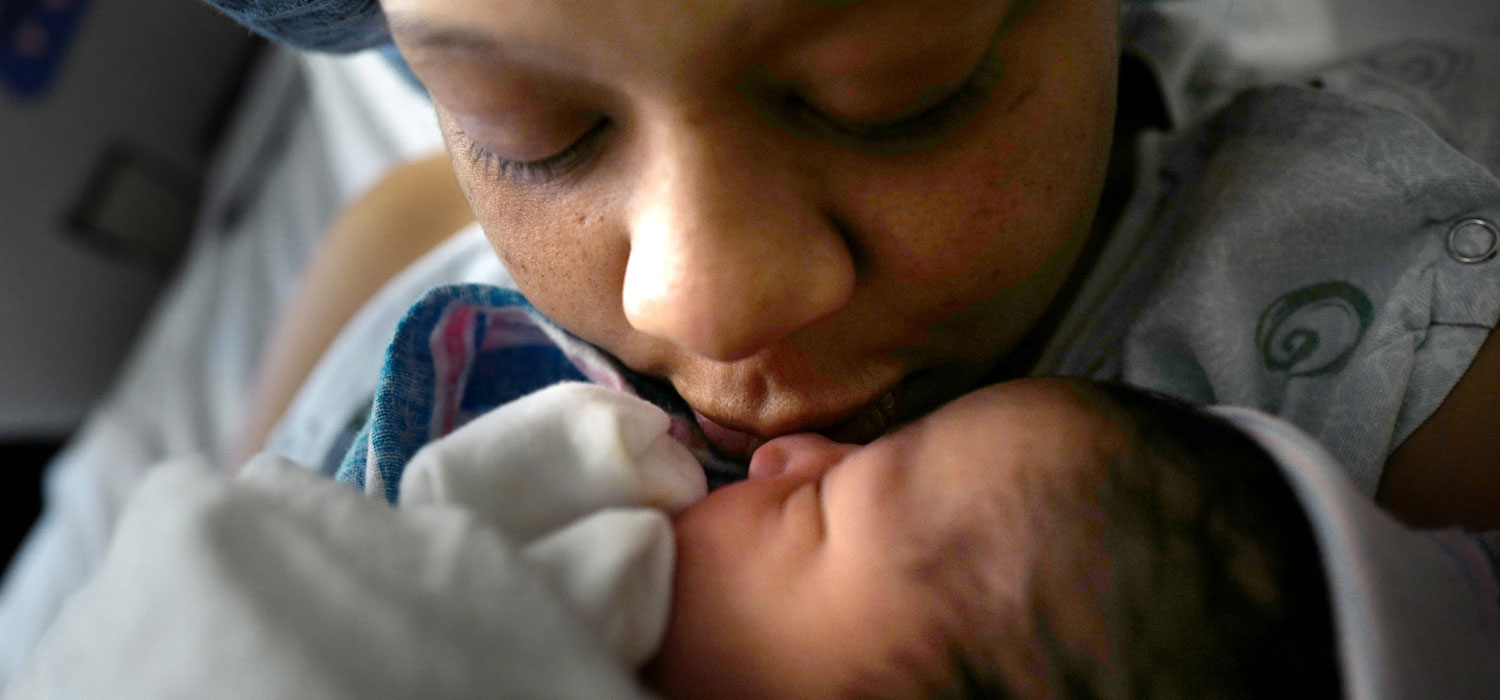
<p>Maya Warren, 31, holds her newborn baby Kortez Isaiah Wallace at Providence Hospital in Washington, D.C., on Friday, December 2, 2016. The first time mother works as an Uber driver with no paid time off for maternity leave. Photo by Nikki Kahn/The Washington Post via Getty Images.</p>
Ask any new parent—the arrival of a new baby brings joy, sleepless nights, and many new expenses for things like clothes, diapers, and other supplies, not to mention medical costs.
As we mark the 25th anniversary of the Family and Medical Leave Act, which provides covered workers with 12 weeks of unpaid, job-protected leave to care for a new child, it is a fitting moment to look at how American families are faring financially in the time around a birth.
Economic insecurity among families with new babies
In new research, I find that in the months when these new expenses hit, American families are likely to see drops in their households’ income level. On average, American households experienced 10.4 percent declines in total household income from prepregnancy to the birth month, according to my analysis of 1996–2013 data from the Survey of Income and Program Participation.
For single mothers who don’t live with other adults, income drops are particularly steep. This group of mothers—who tend to have limited access to paid or job-protected leave and likely lack other household earners to compensate for their own earnings drops—experienced 41.8 percent declines in household income from prepregnancy to the birth month, on average.

Evidence of widespread economic insecurity in the months around a baby’s arrival is concerning, particularly given the growing evidence showing the negative implications of instability—including economic instability—for children’s health and development.
Potential benefits of paid family and medical leave
A variety of possible policy approaches could address high rates of economic instability among parents of very young children. As recent Urban research has shown, paid family and medical leave policies are an important piece of the puzzle. These programs provide income support during the critical weeks and months around a baby’s arrival.
Where they have been implemented in the US, paid family and medical leave programs have also shown promise in increasing mothers’ connections to paid work following a birth, which has positive implications for the economic well-being of families with young children.
Studies have found that these positive effects of paid leave programs are strongest among disadvantaged mothers (single, less-educated, and minority women), likely because these mothers rarely have access to paid leave through their employers.
A handful of states—California, New Jersey, New York, and Rhode Island—have recently implemented paid family and medical leave programs. The District of Columbia and Washington have enacted programs slated to take effect in the coming years. But there is no national policy.
Gathering more evidence about the prevalence of household economic insecurity around a birth—and about the importance of these very early months to children, mothers, and families—shows the potential benefits of expanding paid family and medical leave in the US.
Let’s build a future where everyone, everywhere has the opportunity and power to thrive
Urban is more determined than ever to partner with changemakers to unlock opportunities that give people across the country a fair shot at reaching their fullest potential. Invest in Urban to power this type of work.